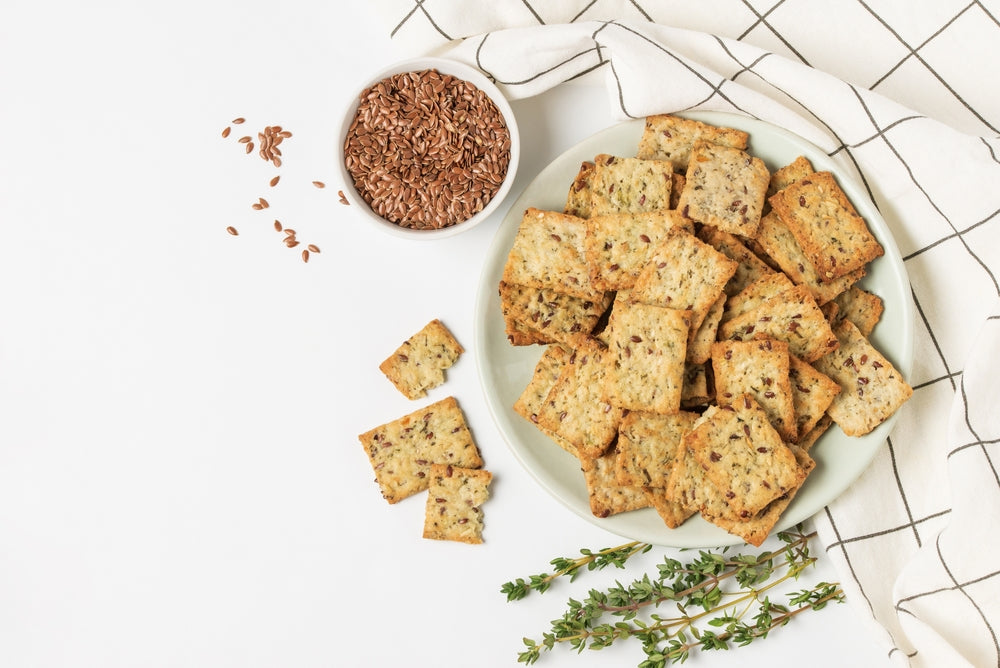Crafting your DIY long-term food storage doesn't have to lack excitement. Incorporate delectable treats that not only satisfy your taste buds but also offer versatility in preparation.
Why does this matter? Emergencies are inherently stressful, and while nutritional sustenance is crucial, enjoying the food you consume plays a significant role in providing comfort.
Consider crackers as a delightful addition to your emergency food storage. Whether enjoyed on their own, paired with a zesty dip, or served alongside your favorite chili, crackers bring a perfect blend of enjoyable taste and adaptability to your long-term storage plan.
Before you dive into storing crackers, explore everything you need to know about their proper storage to ensure lasting freshness and flavor.
Making Your Crackers Is Best But Comes With A Limitation
Flour, oil, and salt are all you need to bake crackers at home. Your long-term storage should have these ingredients in bulk.
There are limitations to baking your crackers.
- You will need an emergency bake oven. During emergencies, having a bake oven might not be possible due to a lack of space and resources.
- You will use a lot of fuel to bake crackers. This might not be ideal during emergencies as fuel will be limited.
Hence, storing a fair number of crackers in your long-term storage is a good option.
Can Crackers Go Bad?
Yes and no!
Now, hear us out on this! Ideally, crackers won’t go bad. They are dry and don’t support microbial growth.
But if crackers aren’t stored properly, they may go bad. For example, if the packets have holes in them or are stored in a moist place, this can result in microbial growth and rancidity. You don’t want unpleasant-tasting crackers in your long-term storage.
Hence, make sure the packets are sealed, ideally in mylar bags. Store them in a cool and dry place. And you can also add oxygen absorber packets to avoid spoilage.
Shelf-Life of Crackers
Don’t be fooled by the best-by date of 6-9 months written on the packaging. You can increase the shelf-life of crackers by storing them in:
- Mylar bags
- Mason Jars
- Vacuum-sealed bags, and more.
Make sure to add oxygen absorbers to avoid spoilage due to oxygen or moisture in the long term.
Crackers to Store in Long-Term Storage
As mentioned above, rancidity can be a factor in the spoilage of crackers. Hence, to avoid this, you can store crackers with low to no fat content. Here are some options for you:
- Knäckebröd
- Matzo (or Matzah)
- 34 Degrees Original Crisps
- Wasa crispbread
- Excelsior Water Crackers
- Future Essential’s The Pilot Crackers (shelf-life up to 30 years)
Crackers to NOT Store in Long-Term Storage
Some of your favorite everyday crackers aren’t suitable for long-term storage due to their high-fat content. These include:
- Ritz Original: For 100 g, it contains 28g of fats
- Wheat Thins: For 100 g, it contains 16g of fats
- Triscuit: For 100 g, it contains 15g of fats
- Saltines: For 100 g, it contains 10g of fats
Tips to Store Crackers Long-Term
- Choose low-fat or no-fat crackers to avoid rancidity.
- Once opened, transfer the crackers into airtight containers such as Mylar bags, vacuum-sealed bags, mason jars, and more. Add oxygen absorber packets to avoid spoilage.
- Store your repackaged crackers in a cool and dry place. Avoid contact with moisture.
- Don’t store heavy items on top or around crackers to avoid breakage.
Bottom Line
Crackers are a fun, tasty, and versatile treat to add to your long-term storage.
Gain more tips and advice on long-term food storage using Mylar bags on our blog. Check it out and keep following for more.
SHARE:





